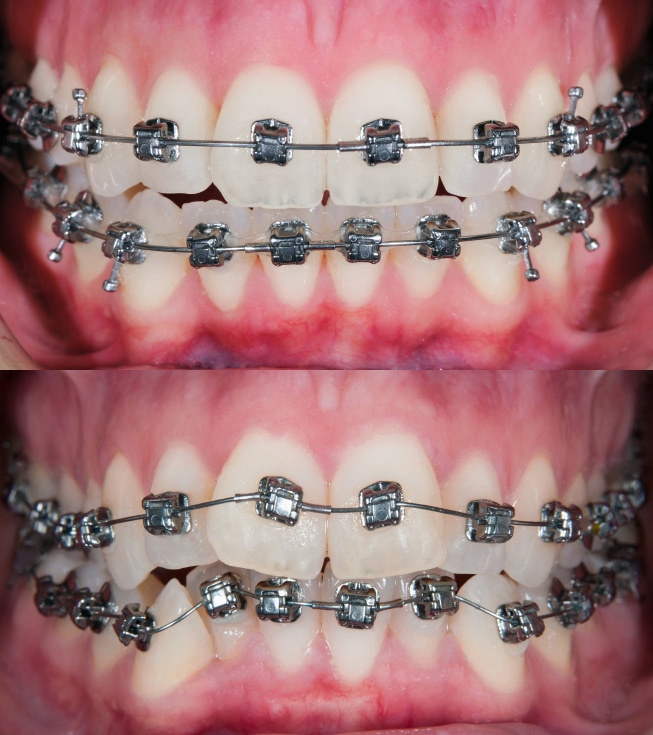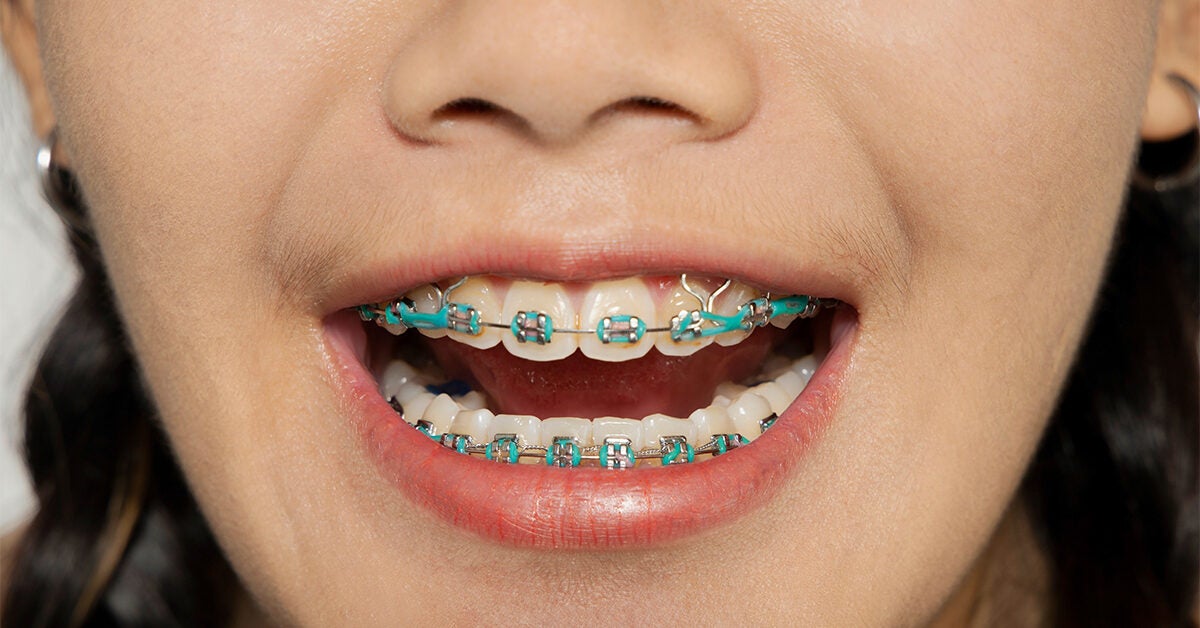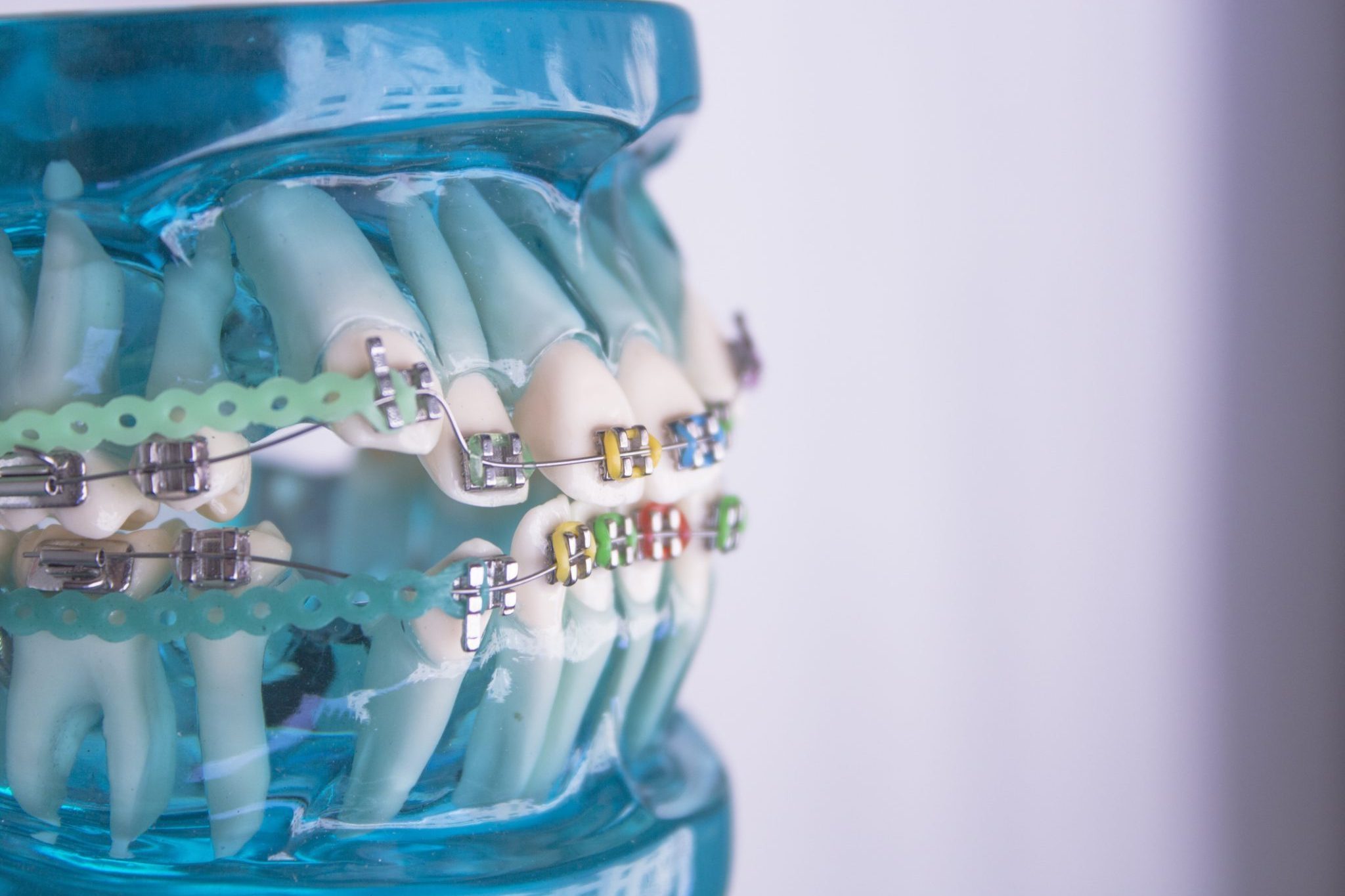Braces work by using brackets that are glued onto your teeth. Teeth are moved by design.
 Do Braces Move Your Teeth Every Day How Do Braces Move Teeth
Do Braces Move Your Teeth Every Day How Do Braces Move Teeth
An orthodontist may recommend headgear for a patient if their bite is more severely out of alignment.

How braces move teeth. Braces Basic Parts and How They Make Your Teeth Move Bands. The periodontal membrane is stretched on one side and compressed on. It could be your tongue sucking your thumb pressure from a finger or any type of brace.
Elastic bands called O-rings or ligatures are placed around the brackets once theyre on your teeth. Braces help guide and gradually move your teeth over time by continuously applying slight force to move the tooth in a certain direction. How Braces Correct Crooked Teeth Imposing light and continuous pressure on teeth through the application of brackets wires and elastics braces can effectively move teeth into their correct position over a period.
The tooth will move if the duration of the force exceeds 15 hours a day. These components of braces actually loosen the undesired portion of the teeth to move it in a specific direction. These brackets have small slots and that is where Dr.
The periodontal ligament stretches on one side and compresses on the other. Tooth movement is your bodys natural response to light pressure applied by braces over a period of time usually two years. Teeth movement entails the side tooth bone to be broken down pulled forward and then grown again on the side of to hold it steady in its new position.
Its normal for your tooth to loosen somewhat in the socket. The next part of braces are the brackets. It needs a step-wise approach allowing the.
When you put up the braces all the components of the braces work collectively in a slower motion to move the teeth in the desired location. Your teeth are moved by design and there are bio-mechanics that dictate how your teeth will begin to shift into their new positions. The device typically transfers the force to the teeth via a facebow or J hooks to the patients dental braces or a palatal expander that aids in correcting more severe bite problems or is used in retention of the teeth and jaws of.
Clear aligners when used in conjunction with tooth-colored attachments can also effectively apply pressure forces to move teeth. How Do Braces Move Teeth. Brackets are the small squares attached to each orthodontic band.
Pressure at the bracket produces pressure and tension pulling at the root of the tooth causing remodeling of bone and tooth movement. How Teeth Move Orthodontic Tooth MovementSpecial shout-out to Luka Andjelov for the video ideaIn this video I will be answer the que. Spacers are made of rubber bands or.
Your teeth are surrounded by gum tissue called gingiva at the top and the bottom portion of the tooth is encased in a periodontal membrane. After you have braces placed they will begin to put pressure on your teeth. To better understand the process its helpful to know how the different components of braces work together to create a beautiful smile.
Many adults who wear braces actually receive them on their early teen years though adults too can benefit from using orthodontic appliances to straighten their teeth. Dental braces are metal-based appliances that dentists use to adjust misaligned and crowded teeth. Braces place pressure on your teeth which causes them to shift in their sockets.
After your teeth are clean and dry ceramic plastic or stainless steel brackets are applied to your. The alveolar bone has tooth sockets where each of your teeth is situated. Sometimes orthodontic bands wrap around each tooth and cemented into place.
Groisser and our team insert orthodontic wires. Archwires are generally made of materials that are activated by body heat to increase stiffness but they tend to. As time passes during your treatment these wires apply pressure on your teeth.
These bands will become the anchor. How braces move teeth Bracket adhesion. Unlike braces headgear is worn partially outside of the mouth.
The alveolar bone lies next to both of these. Brackets are the metal pieces that are cemented onto each tooth. The change in position is very minor which can be noticed on daily basis.
The movement of the teeth occurs without. The braces are put on the teeth in such a way that it does not affect the gumline of the tooth. Aligners Teeth move in response to any constant force.
1 Braces movement with fixed braces vs. One of the frequently asked questions at orthodontic experts of Colorado is do braces move your teeth every day Your teeth gradually shift to the desired position. These wires are held in place by small elastic ties that fit around the brackets.
When the orthodontist places the brackets the position has to be just right so that the pressure applied by the braces will be in the right direction and move the teeth where theyre supposed to be. The brackets and archwires of your braces are what provide your teeth with the force thats needed to create the kind of pressure that results in positive tooth movement. This type of force combination is called a couple which is defined as two equal and opposite forces acting on a mass.
Braces serve as the bio-mechanical gait composite that shapes how your teeth shift to their new positions. This may also be referred to as the periodontal ligament or the PDL.
 Braces Fast Moving Teeth Braces Moving Teeth Too Fast Teeth Braces Dental Braces Braces Problems
Braces Fast Moving Teeth Braces Moving Teeth Too Fast Teeth Braces Dental Braces Braces Problems
 What S The Fastest Way To Straighten Your Teeth
What S The Fastest Way To Straighten Your Teeth
 Braces Explained How Teeth Move Braces Work Youtube
Braces Explained How Teeth Move Braces Work Youtube
 How Orthodontic Braces Can Shift Your Teeth To A New Position
How Orthodontic Braces Can Shift Your Teeth To A New Position
 Stages Of Change In Braces Orthodontic Associates
Stages Of Change In Braces Orthodontic Associates
 Orthodontics Braces Invisalign Kent Tallmadge Orthodontist Dental Braces Orthodontics Dental
Orthodontics Braces Invisalign Kent Tallmadge Orthodontist Dental Braces Orthodontics Dental
 How Teeth Move With Braces Miskin Ajax Dental Youtube
How Teeth Move With Braces Miskin Ajax Dental Youtube
 Braces With Rubber Bands Purpose And How Long They Stay On
Braces With Rubber Bands Purpose And How Long They Stay On
 Orthodontics Braces Aligner Roomchang Mobile Website
Orthodontics Braces Aligner Roomchang Mobile Website
How Do Braces Move Teeth Zaki Orthodontics Va Beach
 How Do Your Teeth Move Blue Ridge Orthodontics
How Do Your Teeth Move Blue Ridge Orthodontics
How Do Braces Actually Move Your Teeth
 Orthodontics Braces Aligner Roomchang Mobile Website
Orthodontics Braces Aligner Roomchang Mobile Website


No comments:
Post a Comment
Note: Only a member of this blog may post a comment.